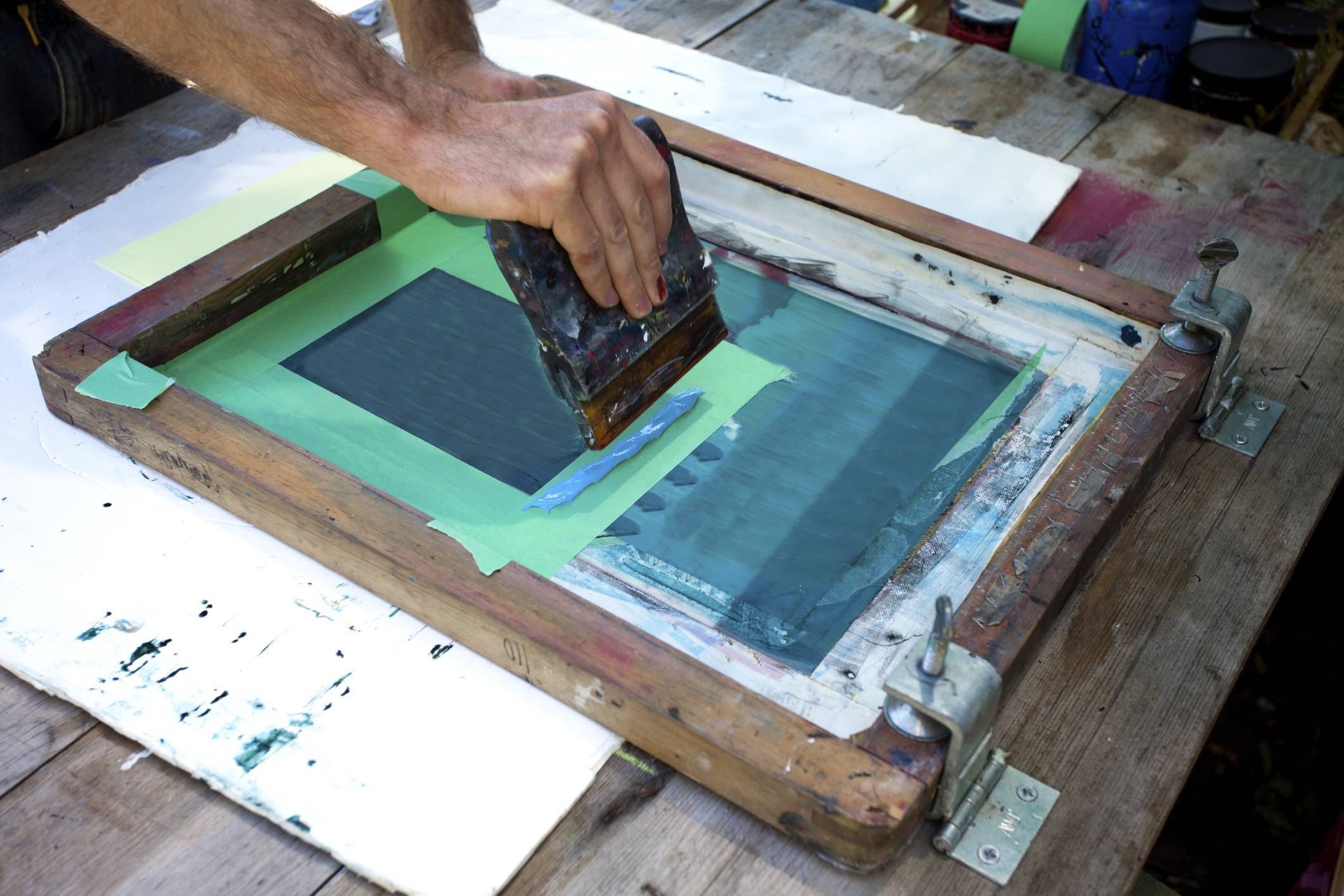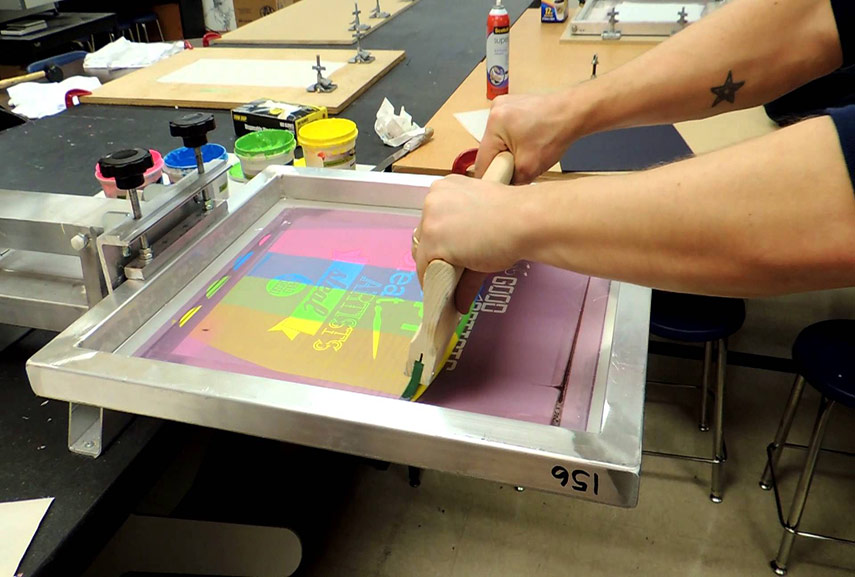ChatGPT said: 10:9 Design reviews: uncovering the customer verdict
The Essential Guide to Comprehending Screen Printing and Its Versatile Makes use of
Screen printing has a rich history that dates back to old times, progressing into an advanced method utilized across different sectors today. This guide discovers the details of the screen printing procedure, outlining its applications in home, fashion, and advertising and marketing décor - 10:9 Design Texas. Comprehending these principles can open up innovative possibility for both business and artistic tasks. The following areas will disclose essential suggestions and techniques to enhance one's screen printing undertakings
The History of Screen Printing
Although screen printing has origins that map back centuries, its development mirrors the technical and artistic innovations of various cultures. Originating in old China, the method was initially made use of for embellishing textiles and later spread to Japan, where it became integral to Ukiyo-e woodblock printing. The approach changed to Europe in the 18th century, where it acquired popularity amongst craftsmens and commercial printers. The invention of photo emulsion in the 20th century transformed screen printing, enabling more complex designs and greater performance. Artists like Andy Warhol even more propelled its appeal, using the medium to develop renowned works that combined commercialism and great art. By the late 20th century, screen printing had actually established itself as a versatile technique, used in vogue, marketing, and art. Today, it continues to evolve, incorporating digital innovation and broadening its applications across various sectors.
The Screen Printing Refine Explained
Screen printing transforms creative visions into tangible styles with a series of precise actions. A photo is produced and then moved onto a screen, typically made of fine mesh textile stretched over a frame. A light-sensitive emulsion is used to the screen, which is subjected to light, setting in locations not covered by the picture. After washing out the unhardened emulsion, a pattern is formed.
Next off, the screen is positioned over the substrate, whether it be fabric, paper, or one more product. Ink is then pressed through the open locations of the pattern using a squeegee, depositing the layout onto the substratum listed below. This procedure can be duplicated for numerous colors, calling for separate displays for each and every tone. Ultimately, the printed product is cured utilizing heat to guarantee the ink sticks properly, causing a sturdy, vivid style prepared for usage.
Kinds of Screen Printing Techniques

Additionally, specialized methods, such as discharge screen printing, eliminate dye from the fabric to produce softer prints, while aluminum foil screen printing uses metal aluminum foil to attain a shiny finish (10:9 Design reviews). Each strategy provides unique features, satisfying various innovative demands and production ranges, ultimately increasing the opportunities within the screen printing domain name
Applications of Screen Printing in Numerous Industries

Furthermore, the signage and marketing industries utilize screen printing for producing distinctive display screens and banners. This method enables for bold colors and elaborate designs that capture attention. In electronics, screen printing is utilized for applying conductive inks to circuit card, necessary for part links. The home design sector accepts screen printing to create unique styles on textiles and wall surface art. Generally, screen printing works as a crucial device throughout diverse areas, enhancing products with individualized and visually appealing graphics.
Tips for Effective Screen Printing Projects
While undertaking a screen printing job, cautious interest to information can significantly enhance the last outcome. First, selecting high-grade materials is necessary; this consists of the screen, inks, and substrates. Utilizing ideal mesh counts can affect ink deposition and information resolution. Preparation is equally crucial; detailed cleaning of screens and appropriate direct exposure times guarantee crisp prints.
Next off, exact enrollment is essential for multi-color prints. Utilizing placement devices can assist accomplish specific layering. Additionally, screening prints on scrap products prior to manufacturing assists identify possible issues without throwing away sources.

Often Asked Inquiries
What Materials Are Ideal for Screen Printing on Fabric?
Cotton and polyester blends are excellent for screen printing on textile due to their resilience and ink absorption. Additionally, specialty materials like silk or canvas can generate one-of-a-kind structures and finishes, boosting the general style top quality.
Just how Do I Tidy and Maintain Screen Printing Equipment?
To clean and preserve screen printing equipment, one must consistently wash screens with ideal solvents, check check here squeegees for wear, lubricate moving parts, and shop all things in a completely dry, dust-free setting to lengthen their life-span.
What Are the Environmental Effects of Screen Printing?
Screen printing can have considerable ecological influences, including chemical waste from solvents and inks, water use throughout cleaning procedures, and energy consumption. Green products and sustainable methods are important for lessening these adverse results.
Can Screen Printing Be Done at Home Efficiently?
Screen printing can be effectively done at home with the ideal products and strategies. Enthusiasts can create top quality prints, though success depends upon their ability level, tools, and understanding of the process entailed.
What Are the Expenses Related To Beginning a Display Printing Company?

Beginning a screen printing service includes costs for tools, materials, and work area. First costs usually vary from a couple of hundred to numerous thousand dollars, depending on the scale, quality of equipment, and preferred production capacity.
Screen printing has a rich background that dates back to ancient times, developing right into an advanced technique made use of across numerous markets today. Another method, rotary screen printing, uses cylindrical displays, facilitating continuous printing on textile rolls, therefore enhancing efficiency for large-scale manufacturings. In addition, specialty strategies, such as discharge screen printing, get rid of color from the textile to create softer prints, while aluminum foil screen printing uses metal foil to accomplish a shiny surface. In the style field, screen printing is extensively used to create dynamic styles on clothing, making it possible for brands to showcase their one-of-a-kind styles. Cotton and polyester blends are optimal for screen printing on textile due to their longevity and ink absorption.